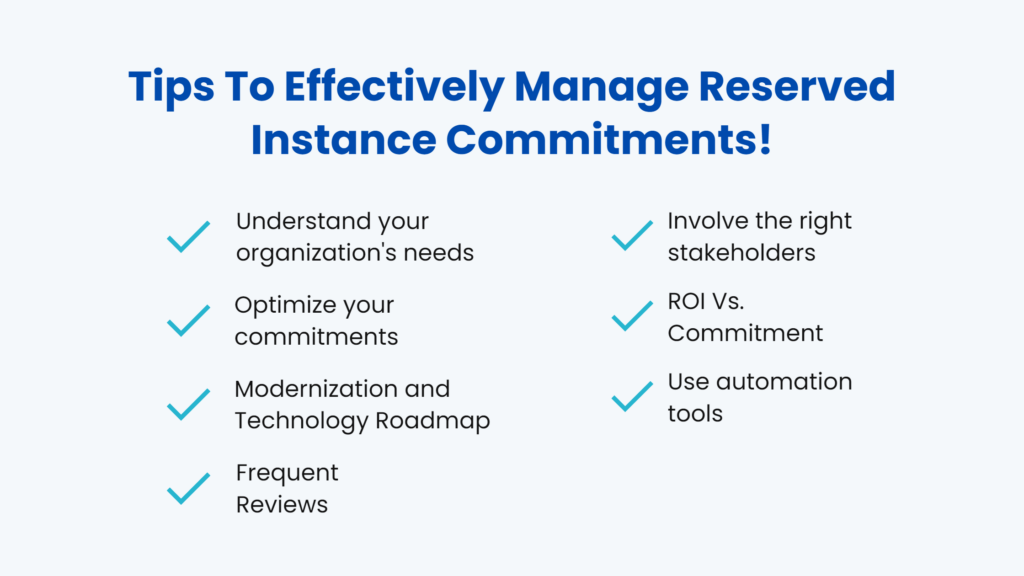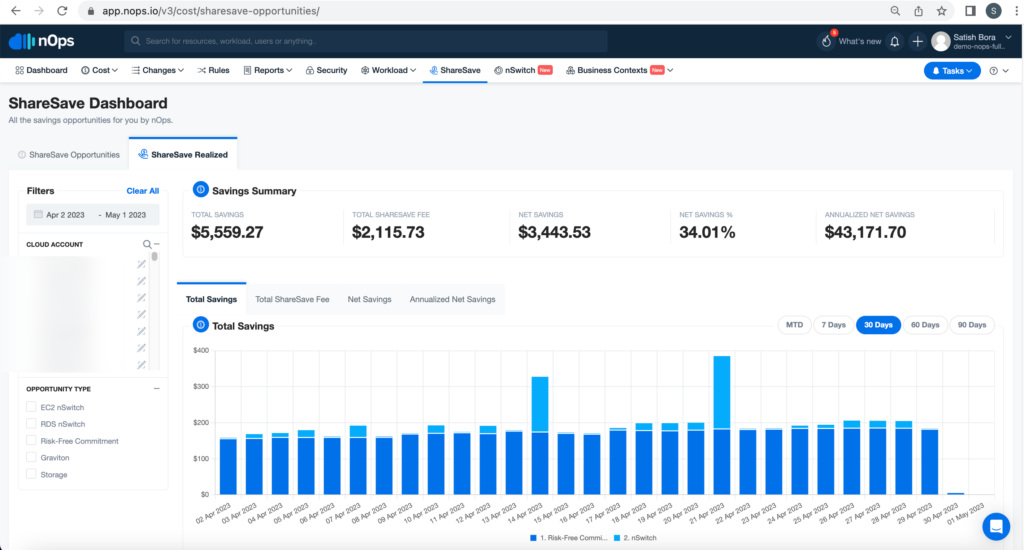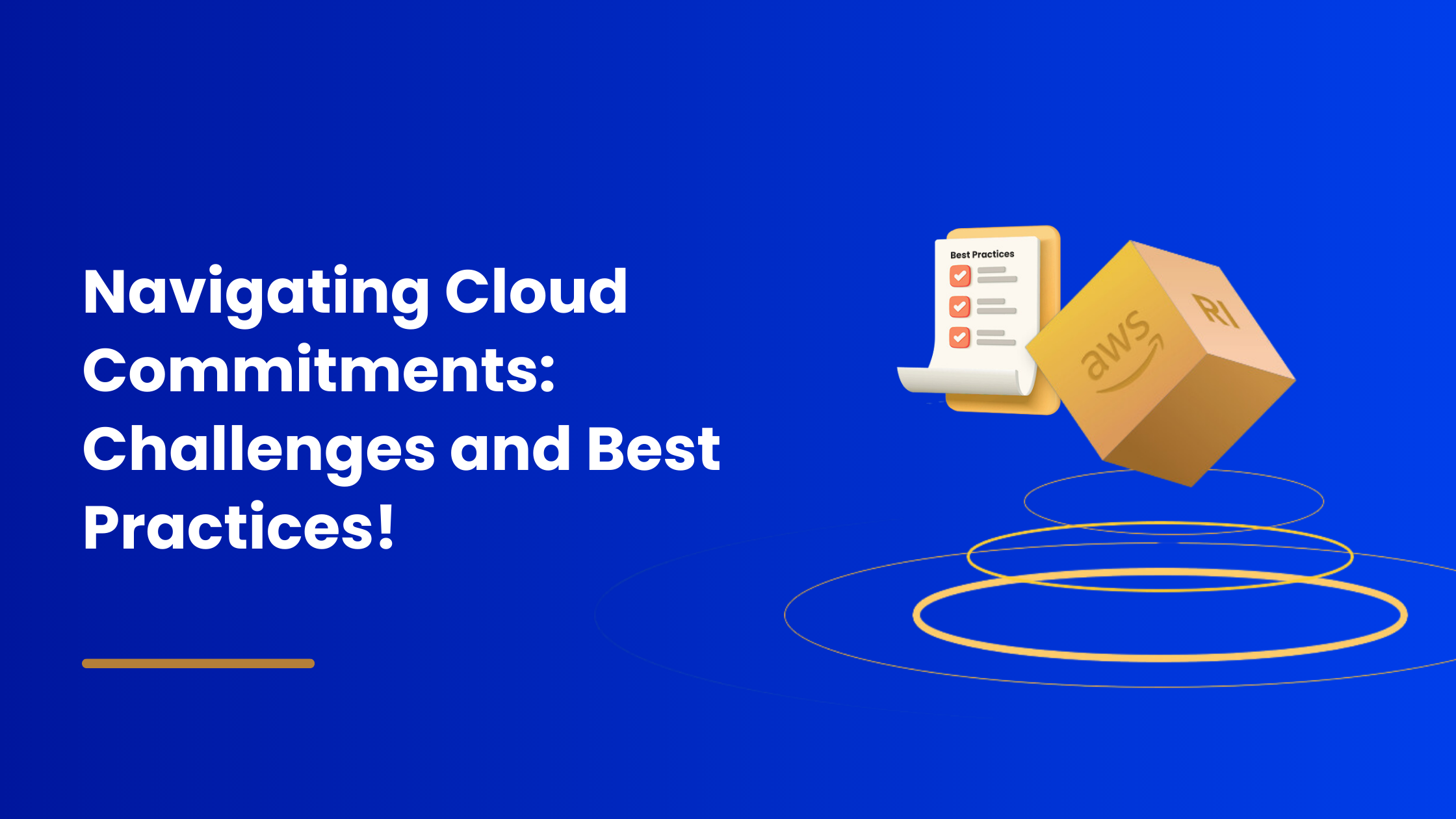Cloud providers offer a variety of services with flexible pricing models, allowing organizations to pay only for the resources they use. For example, AWS currently offers 200+ services with a pay-per-use pricing model. This wide range of services allows organizations to choose the ones that best fit their needs and scale them up or down as required.
In addition to the different pricing models, AWS offers numerous savings plans like Reserved Instance Commitments. Purchasing Reserved Instances (RIs) or committing to a particular capacity can lead to better pricing and cost savings compared to on-demand services. However, committing to a specific cloud infrastructure can be challenging, particularly when multiple stakeholders are involved. This blog explores the cloud commitments challenges and the tips to overcome them. Read through!
What Are The Challenges To RI Commitments?
Committing to a cloud infrastructure involves anticipating future resource needs and making a long-term financial commitment. It requires collaboration between different departments within an organization, including IT, finance, and procurement. This can be a daunting task, especially when the needs of the organization are constantly evolving.
In numerous cases, decision-makers who commit to a specific cloud infrastructure may not be actively involved in the engineering workflows. This can result in commitments that do not align with the organization’s optimal needs, leading to wasted resources and unnecessary spending. Additionally, when individuals who have made commitments leave the organization, their commitments can be underutilized, leading to inefficient resource allocation or draining cloud expenses.
Tips To Effectively Manage Reserved Instance Commitments!

Effectively managing commitments for your cloud infrastructure can be a time-consuming and intricate task that requires meticulous attention to detail. It’s crucial to regularly review your cloud infrastructure commitments to ensure that you are optimizing your spending and getting the best value for your money. Here are some tips for efficiently managing your cloud commitments:
- Understand your organization’s needs:
Prior to committing to a cloud infrastructure, it’s crucial to have a clear understanding of your organization’s needs. This includes assessing workload requirements, usage patterns, and projected growth. Understanding these factors will help you make informed commitments and avoid unnecessary expenses.
- Optimize your commitments:
Cloud providers offer various pricing models that allow you to commit to a particular resource for a defined period. Thus, it is crucial to optimize your commitments by selecting the right resource and committing for the appropriate duration. This will ensure that you get the best value for your money.
- Modernization and Technology Roadmap:
When committing to a cloud infrastructure, ensure that you’re not getting locked into legacy technology or odd resource types. It’s essential to ensure that your commitments align with your future plans. This will prevent your commitments from becoming a constraint on your organization’s growth.
- Frequent Reviews:
To ensure optimal utilization of your cloud commitments, it’s crucial to regularly review them. Ideally, this should be done on a continuous basis, but at the very least, it should be done once a quarter.
- Involve the right stakeholders:
Ensure that the right stakeholders are involved in your cloud infrastructure decisions. This includes involving your engineering, finance, and management teams. Having the right stakeholders involved will help ensure that your commitments align with your organization’s needs.
- ROI Vs. Commitment:
When making commitments, assess the actual ROI over a period of time. Sometimes, committing may result in initial savings, but it may not be sustainable in the long term. Thus, it’s essential to evaluate the ROI periodically and comprehensively for the complete commitment period. This can help you adjust and optimize for the fullest potential.
- Use automation tools:
There are several automation tools that can help you manage your cloud commitments. These tools can automatically adjust your commitments based on your usage patterns, saving you time and money. Some modern automation tools nOps.io even go further and offer complete Risk-Free Commitments with no financial or time commitment, while still providing comparable or better savings than manually managed commitments.
How Can nOps Help With Risk-Free Commitments?
Managing your RI commitments can be a stressful and time-consuming task, especially when you need to balance innovation and cost savings. That’s where nOps comes in with our Risk-Free Commitment platform.
With nOps, you no longer need to worry about overcommitting or overpaying for instances. nOps eliminates the tireless scouring through pricing tables, RI inventory, and Marketplace rates.
nOps Risk-Free Commitment platform takes the hassle out of managing your reservations and automates your savings commitments as you resize/replace your EC2 instances. This allows you to take advantage of new instance classes, types and sizes while maintaining cost efficiency. We also ensure 100% utilization of the RIs and Savings Plans commitments we automate for you.

With nOps, you’ll pay less for your instances and benefit from compounded savings through effective reservations.
Primarily, your team focuses on innovation, while nOps runs optimization on auto-pilot to help you track, analyze and optimize! Our customers can benefit in two key ways:
- First, pay less for what you use without the financial risk.
- Second, use less by automatically pausing idle resources.
Let us help you save! Sign up for nOps today or book a demo call.



